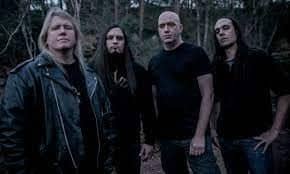Mut The Dangerous Dead
Trouble me No Longer
I Inscribe Thy Name
I Threaten Thee With The Second Death
I Kill Thy Name
And Thus I Kill Thee Again
In The Afterlife Bau Terror of the Living
Angry Spirits of the Condemned Dead
I Write thy Name
I Burn Thy Name In Flames
I Kill Thy Name
And Thus Thee Are Accursed
Even Unto The Underworld Mut The Troublesome Dead
Plague Me No Longer
Thou Art Cursed
Thy Name Is Crushed
Thine Clay is Smashed And Broken
Thy Vengeance Against The Living
Shall Come to Naught (Among the most sinister objects from the ancient world are the figurines in human shape which were used to cast spells on the persons they depicted. Such objects survive to this day usually only when they are buried as a part of a rite, and usually in the vicinity of a tomb or necropolis. Archeologist have found the remains of such rites at the royal cemetaries of Giza, Saqqarra, Lisht, and at several forts in Nubia. Stone, wax, or mud figures, or broken clay tablets or clay pots, are inscribed with lists of the enemies of Egypt. The body of the figure is usually flattened to make room for the text, or sometimes a papyrus is inserted inside the body cavity. On the back, the arms, or the arms and legs, are bound together. The inscriptions found on them are called execration texts. These texts threaten death to specific people. Often, they include the name, parentage, and title of war. The execration texts were mainly aimed at enemy rulers, hostile nations, and tribes in Nubia, Libya, and Syria-Palestine. Magickal incantations and rites were used to cause death and suffering, and to prevent the angry spirits of the executed from taking vengeance on those who had condemned them. Usually included in these texts are long-standing enemies of those involved in the cursing rites. Ther.

האתר פועל ברישיון אקו"ם
כל הזכויות שמורות 2022 ©